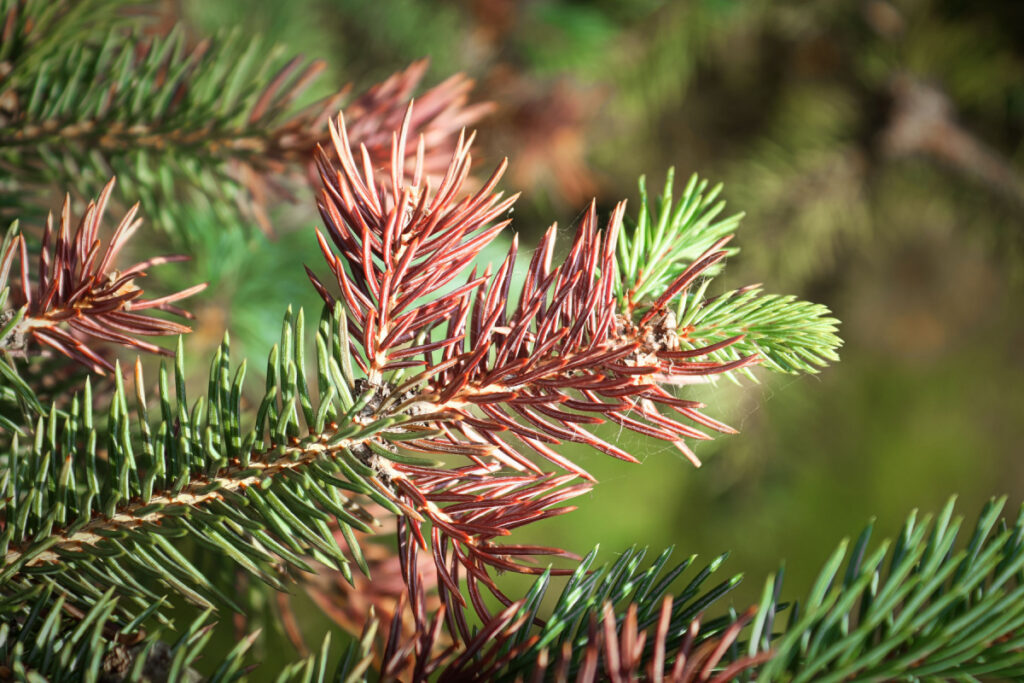As winter blankets the landscape with its icy embrace, the beauty of evergreen trees and shrubs stands out like a beacon of hope amidst the barrenness. Their lush, green foliage persists even in the harshest of conditions, making them a valuable addition to any landscape. However, the threat of winter burn in evergreens looms large, potentially turning these vibrant symbols of life into brown, withered shadows of their former selves. To keep your plants looking vibrant, learn how to identify, prevent, and treat winter burn in evergreens.
Understanding Winter Burn in Evergreens
Winter burn is a common issue that affects evergreen trees and shrubs during the cold winter months. When the ground freezes, evergreen plants struggle to absorb water from the soil. This frozen soil, coupled with sunny days and harsh winds, leads to a phenomenon called “transpiration.” Transpiration is the process by which plants lose water through their leaves. During winter, the frozen soil prevents the plant from replacing this lost water, leading to moisture deficiency in the evergreen’s foliage.
As a result, the needles or leaves of the affected evergreen trees and shrubs turn brown, signaling the onset of winter burn. It’s important to note that winter burn doesn’t become apparent immediately; the damage often becomes noticeable in early spring when the plants start emerging from dormancy.
Preventing Winter Burn in Evergreens
Preventing winter burn in evergreens is the most effective strategy for keeping your landscape green and vibrant throughout the year. Here are some crucial steps to help you safeguard your evergreen plants:
- Proper Hydration: Ensure your evergreens are well-hydrated before the ground freezes. Water them deeply in late fall to replenish moisture levels in the root system.
- Mulch Application: Apply a thick layer of mulch around the base of evergreen trees and shrubs. Mulch helps to retain soil moisture and provides insulation against extreme cold.
- Anti-Desiccant Spray: Consider using anti-desiccant sprays, especially on broadleaf evergreens, to create a protective barrier that reduces water loss through transpiration.
- Windbreaks: Install temporary windbreaks or barriers to shield your evergreens from harsh winter winds, which can accelerate water loss.
- Avoid Fertilization: Refrain from fertilizing your evergreens in late fall, as this can promote new growth that is susceptible to winter damage.
Treating Winter Burn in Evergreens
If you notice signs of winter burn on your evergreens, taking prompt action can help minimize damage and promote recovery. Even if the majority of your evergreen shrub or tree is brown, it may still be able to bounce back. Make a small slice in one of the affected branches with a pocket knife. If the branch is green and moist underneath the surface, it will produce more needles come springtime. If the branches are brown and dry, prune them along with any damaged branches to allow for better air circulation and reduce the risk of disease. Then, in early spring, give your evergreens a boost with a slow-release, balanced fertilizer to encourage healthy growth.
Professional Care for Evergreens
Caring for ornamental plants, such as evergreen trees and shrubs, requires expertise and attention to detail. If you’re uncertain about identifying, preventing, or treating winter burn in your evergreens, it’s wise to seek the assistance of professionals. As a leading provider of lawn care services, we can keep your landscape lush and vibrant year-round. Our experienced team understands the specific needs of evergreen plants and can create a customized care plan to protect them from winter burn and other seasonal challenges. Contact us today to get started!

